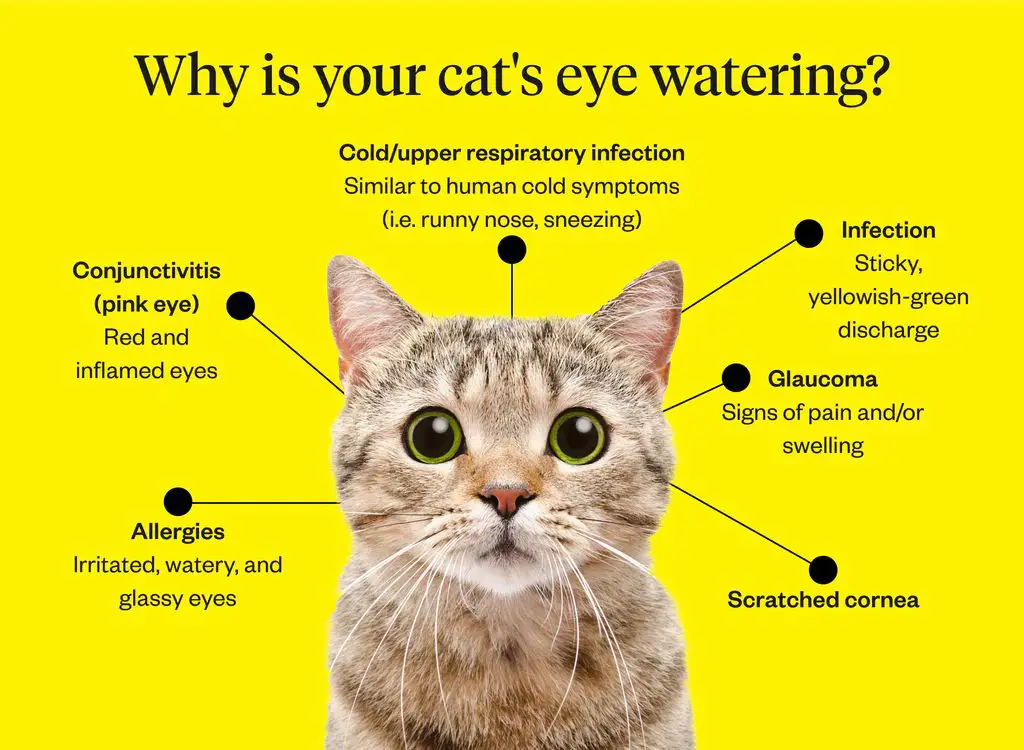What is Cat Mace?
Cat mace is a type of animal repellent that is formulated to deter cats. It contains active ingredients that emit an unpleasant scent for cats but is pleasant for humans. The active ingredients often include essential oils like citronella, eucalyptus, peppermint, clove, and thyme oils (Nature’s MACE Cat Repellent).

When a cat comes into contact with cat mace, the oils activate and release the unpleasant scent. This overwhelms the cat’s sensitive sense of smell, causing irritation and discomfort. As a result, cats will avoid areas that have been sprayed or treated with cat mace.
Cat mace is frequently used by homeowners and gardeners to repel stray or feral cats from yards, gardens, flowerbeds, and other areas. The strong scent acts as a deterrent, encouraging cats to avoid treated areas and preventing unwanted behaviors like digging, scratching, spraying, and defecating (Nature’s MACE Cat Repellent). Cat mace can be applied through sprays, granules, or other delivery methods.
Does Cat Mace Affect Dogs?
Cat mace, also known as cat or dog repellent spray, can affect dogs if they are directly exposed to it. The active ingredients in cat mace are designed to deter cats and dogs through scent and taste, but are not generally harmful to them.[1]
Cat mace is made from natural ingredients like black pepper, capsaicin from hot peppers, and bittering agents. When sprayed or applied near areas cats frequent, it triggers a natural aversion response.[2] Dogs have a similar aversion to these strong scents and tastes.
The effects on dogs are generally mild to moderate, including sneezing, shaking their head, or pawing at their face. Cats tend to have a stronger response than dogs due to their more sensitive noses. The effects wear off within a few minutes once the dog is removed from the area.
In rare cases, direct contact with eyes or mucus membranes can cause more severe irritation. However, cat mace is formulated to be safe for use around pets when following label directions.
Mild Effects of Cat Mace on Dogs
Cat mace can cause mild irritation and discomfort in dogs when they are exposed to small amounts. The active ingredients in cat mace, usually capsaicin or related compounds, can have mild effects on a dog’s eyes, skin, and mucous membranes.
The most common mild effects of cat mace exposure in dogs include:
- Tearing, blinking, and squinting as irritation occurs in the eyes. Dogs may rub their eyes or face with their paws to try to relieve discomfort (Pepper-Spray-Store).
- Redness, swelling, and irritation of the eyes and skin where the spray has contacted the dog. Mild redness, itching, or burning sensation may occur (NHV Pet Health).
- Coughing, gagging, or drooling as irritation occurs in the mouth and throat if ingested. However, serious effects are unlikely with small exposures (Pepper-Spray-Store).
These mild effects are temporary but can cause short-term discomfort in dogs. The irritation usually resolves within an hour or less if the dog’s face and eyes are flushed with water to wash away residues. Mild effects do not require medical treatment in most cases.
Moderate Effects of Cat Mace on Dogs

Dog’s exposed to moderate levels of cat mace may experience burning, stinging pain in their eyes, nose, mouth, and on their skin according to this source: What are the consequences of using pepper spray on dogs? The active ingredient in cat mace, capsaicin, causes inflammation and irritation when it comes into contact with mucous membranes. Dogs may rub their face repeatedly on the ground or paw at their eyes in an attempt to relieve the stinging sensation.
Moderate exposure can also lead to breathing difficulties, as capsaicin causes restriction of the airways and increased mucus production according to this veterinary source: My dog chewed on the pepper spray container and got… Dogs may cough, wheeze or pant heavily after being sprayed. This respiratory distress is usually temporary, but can be dangerous for dogs with pre-existing conditions like asthma.
The pain and irritation of cat mace can also cause disorientation and difficulty navigating in dogs. They may bump into objects or have trouble finding their way after being sprayed. According to this source: Product FAQ | Nature’s Mace, the effects of the spray usually subside within 30-60 minutes with supportive care like flushing with water.
Severe Effects of Cat Mace on Dogs
Exposure to cat mace can have severe effects on dogs, especially if sprayed directly in the face at close range. The active ingredients in cat mace, such as capsaicin, can be highly irritating and even dangerous if the dog inhales or ingests the spray.
Some of the most severe effects include:
- Swelling of the airways – Dog’s nasal passages and throat may swell dangerously, restricting airflow. This can lead to suffocation if left untreated. According to the World Animal Protection, capsaicin exposure can cause swelling in airways in both humans and animals (source).
- Respiratory distress – In addition to airway swelling, the dog may experience shortness of breath, wheezing, coughing, and respiratory arrest. The irritation and inflammation make it very difficult for the dog to breathe normally.
- Vomiting and diarrhea – Ingesting the pepper spray causes significant irritation to the dog’s gastrointestinal tract. This often results in uncontrollable vomiting and diarrhea, leading to dehydration.
These severe effects require emergency veterinary treatment to manage the dog’s airway, breathing, and fluid balance. Left untreated, the dog is at risk of asphyxiation, shock, or secondary complications from the exposure.
Factors that Influence Severity
There are several factors that determine how severely a dog will be affected by exposure to cat mace:
– Amount of exposure: Dogs exposed to larger amounts of cat mace, either by getting sprayed directly or being in close proximity to a spraying, will experience more severe effects than those exposed to smaller traces.
– Health of dog: Dogs with respiratory issues or skin conditions may experience more irritation from cat mace exposure than healthy dogs. Puppies and senior dogs also tend to be more vulnerable.[1]
– Size of dog: The toxicity of capsaicin in cat mace is believed to be similar across dogs of different sizes when adjusted per body weight. However, larger dogs tend to be affected less because their size dilutes the spray. Small dogs are more susceptible.[2]
– Treatment received: Quickly washing off the spray and providing veterinary care can significantly reduce the severity and duration of symptoms in exposed dogs.
[1] https://www.quora.com/Will-pepper-spraying-a-dog-make-it-go-away-or-cause-it-to-be-more-aggressive
[2] https://pubmed.ncbi.nlm.nih.gov/31508432/
First Aid for Dogs Exposed to Cat Mace
If your dog has been sprayed with cat mace, it’s important to act quickly to flush the irritating chemicals from their eyes, skin, and mucus membranes. The first step is to use copious amounts of cool water to rinse the affected areas [1]. You can use a gentle stream from a hose or pour water from a bowl or cup over your dog’s face, taking care to flush under their eyelids, in their ears, and around their mouth. This will help dilute the active ingredients in the spray and remove it from your dog’s fur and skin.

After thoroughly rinsing with water, you may want to apply a soothing, medicated shampoo or eyedrops designed for dogs. Choose an ophthalmic wash specifically for pets, not humans. The shampoo and eye drops will provide additional relief by further flushing out any lingering spray residue. Be sure to reward your dog with praise and treats for tolerating the unpleasant first aid steps.
It’s also important to keep your dog as calm and relaxed as possible after exposure to cat mace. The chemicals can cause anxiety and agitation on top of the stinging irritation. Comfort your dog, speak in a soothing voice, and consider natural calming supplements or anti-anxiety medication from your veterinarian if needed [2]. Remaining calm will help alleviate any additional stress for your dog as the effects of the spray wear off.
Emergency Treatment for Cat Mace Exposure
If your dog has been severely exposed to cat mace (pepper spray), emergency vet treatment is recommended. The active ingredients in cat mace can have serious effects on dogs if not treated promptly and properly.
Some key emergency treatments your vet may utilize include:
- Oxygen therapy to help open airways and improve breathing
- IV fluids to flush the eyes and skin as well as provide hydration support
- Medications like antihistamines and steroids to reduce inflammation and swelling
According to veterinarians, oxygen therapy is often one of the first treatments for dogs exposed to pepper spray, as it can quickly help open constricted airways. IV fluids also help flush the irritants from the eyes and skin to provide faster relief.
Medications can further reduce swelling, inflammation, and other reactions caused by the active ingredients in cat mace. Your vet may administer diphenhydramine (Benadryl), dexamethasone, or other drugs based on your dog’s specific condition.
Emergency vets are equipped to provide advanced care and round-the-clock monitoring to manage severe pepper spray exposure in dogs. Don’t hesitate to seek emergency vet assistance if your dog exhibits distressed breathing, severe swelling, or other concerning symptoms after cat mace exposure.
Preventing Exposure
The best way to prevent a dog’s exposure to cat mace is through careful supervision of any interactions between dogs and cats. Cats will often spray as a defense mechanism if they feel threatened by dogs, so keeping dogs leashed, separating cats and dogs when unsupervised, and discouraging chasing or antagonistic behaviors can reduce the likelihood of a spraying incident (Is Mace Safe For Pets? – NHV Natural Pet Products Blog). It’s also important to keep cat mace containers tightly sealed and stored safely out of reach of curious dogs.

Additionally, training dogs to avoid approaching or provoking cats can be an effective preventative technique. Teaching commands like “leave it” when they spot a cat and rewarding calm, indifferent behaviors around cats can help mitigate incidents where a cat feels the need to spray. Taking precautions like these can significantly reduce the chances of a dog being exposed to the unpleasant effects of cat mace.
Long Term Effects on Dogs
When treated quickly and properly, exposure to cat mace usually does not have lasting effects on dogs (petplace.com). The active ingredients in cat mace are designed to cause temporary, short-term discomfort. For most dogs, once the cat mace is thoroughly rinsed off and the dog receives appropriate veterinary care, no permanent damage is done.
However, if exposure is severe, there is potential for more serious eye and lung injuries. According to worldanimalprotection.us, prolonged exposure to high concentrations of cat mace could cause long-lasting eye injuries or respiratory damage. But even then, dogs are resilient animals and can often recover fully with appropriate treatment and time.
Overall, as long as the dog receives prompt first aid and veterinary attention as needed, the long-term prognosis is good. With proper care, most dogs will avoid any permanent effects from cat mace exposure.
